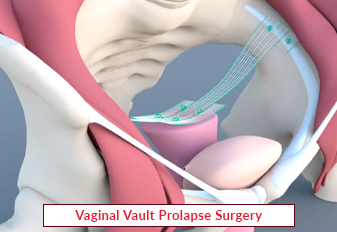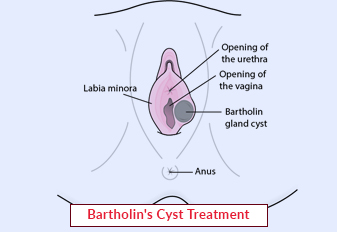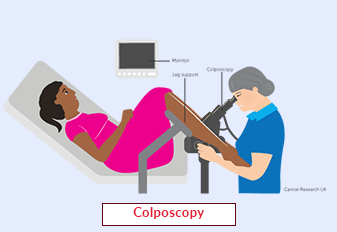Vaginal Vault Prolapse Surgery

What is Vaginal Vault Prolapse Surgery?
Introduction
Vaginal vault prolapse is a condition in which the upper portion of the vagina drops or descends from its normal position. This can occur after a hysterectomy when the supporting structures of the vagina weaken. When conservative treatments are unsuccessful, vaginal vault prolapse surgery may be recommended. In this article, we will explore the details of this surgical procedure, including its purpose, types, and the recovery process.
Understanding Vaginal Vault Prolapse
Vaginal vault prolapse refers to the descent of the upper portion of the vagina into the lower portion or outside the vaginal opening. It can lead to discomfort, pelvic pressure, urinary symptoms, and difficulties with bowel movements. This condition commonly occurs in women who have undergone a hysterectomy, as the removal of the uterus can weaken the supporting tissues and ligaments that hold the vagina in place.
Symptoms and Causes of Vaginal Vault Prolapse
The symptoms of vaginal vault prolapse may vary from mild to severe and can include:
-
A sensation of heaviness or pressure in the vagina or pelvis
-
A bulging or protrusion of tissue from the vaginal opening
-
Urinary incontinence or difficulties with urination
-
Bowel movement difficulties
-
Pelvic pain or discomfort during intercourse
The main causes of vaginal vault prolapse are:
-
Weakness or damage to the pelvic floor muscles and connective tissues
-
Loss of estrogen, particularly after menopause, leading to reduced tissue elasticity
-
Prior hysterectomy, which removes the support provided by the uterus
About Vaginal Vault Prolapse Surgery
Vaginal Vault Prolapse Surgery: An Overview
Vaginal vault prolapse surgery aims to restore the vagina to its normal anatomical position and alleviate the associated symptoms. This surgery involves repairing and strengthening the pelvic floor muscles and supporting tissues. The specific surgical approach depends on various factors, including the severity of the prolapse, the woman's overall health, and the surgeon's expertise.
Types of Vaginal Vault Prolapse Surgeries
There are different surgical techniques used for vaginal vault prolapse, including:
-
Vaginal Approach: This involves accessing the vaginal vault through the vagina and repairing the prolapse using sutures or mesh reinforcement.
-
Abdominal Approach: In some cases, an abdominal incision may be made to access and repair the vaginal vault prolapse. This approach is typically used for more severe cases or when additional procedures are required.
-
Laparoscopic Approach: Laparoscopic surgery involves making small incisions and using a laparoscope (a thin tube with a camera) to guide the surgeon in performing the repair.
The choice of surgical approach depends on several factors, such as the extent of the prolapse, the woman's overall health, and the surgeon's preference and expertise.
Preparing for Vaginal Vault Prolapse Surgery
Before undergoing vaginal vault prolapse surgery, a comprehensive evaluation will be conducted to assess the woman's overall health and determine the most suitable surgical approach. This may involve a physical examination, medical history review, and additional tests such as imaging or urodynamic studies. The surgeon will provide specific pre-operative instructions, which may include:
-
Stopping certain medications or supplements that can increase the risk of bleeding
-
Fasting for a specific period before the surgery
-
Arranging for someone to accompany the woman to and from the hospital
-
Preparing the home environment for a smooth recovery
Procedure of Vaginal Vault Prolapse Surgery
The Procedure of Vaginal Vault Prolapse Surgery
The actual procedure for vaginal vault prolapse surgery will vary based on the chosen approach and the individual case. However, the general steps involved may include:
-
Anesthesia: The woman will receive anesthesia to ensure comfort during the procedure. This can range from local anesthesia to general anesthesia, depending on the complexity of the surgery and the woman's preference.
-
Accessing the Vaginal Vault: The surgeon will make the necessary incisions to access the vaginal vault and visualize the prolapsed tissues.
-
Repair and Reconstruction: The surgeon will repair the weakened or damaged tissues, often by using sutures to reinforce and tighten the supportive structures. In some cases, mesh may be used to provide additional support.
-
Closing the Incisions: Once the repair is complete, the incisions will be closed using dissolvable stitches or sutures.
Recovery and Aftercare
Following vaginal vault prolapse surgery, the woman will be monitored in the hospital for a certain period to ensure proper healing. The recovery time varies depending on the surgical approach and the woman's overall health. During the recovery period, it is important to follow the surgeon's instructions, which may include:
-
Resting and avoiding strenuous activities
-
Taking prescribed pain medications as needed
-
Maintaining good hygiene and caring for the incision site
-
Avoiding sexual intercourse and using tampons until cleared by the surgeon
-
Attending follow-up appointments to monitor the healing process
Risks and Complications
As with any surgical procedure, vaginal vault prolapse surgery carries certain risks and potential complications. These can include:
-
Infection at the surgical site
-
Bleeding or hematoma formation
-
Damage to nearby organs or structures
-
Recurrence of prolapse
-
Urinary or bowel complications
-
Adverse reactions to anesthesia
It is important to discuss these risks with the surgeon and understand the potential benefits and drawbacks of the procedure.
Alternative Treatments for Vaginal Vault Prolapse
In some cases, conservative or non-surgical treatments may be considered before opting for vaginal vault prolapse surgery. These can include:
-
Pelvic floor exercises (Kegel exercises)
-
Pessary placement to support the vaginal vault
-
Hormone replacement therapy to improve tissue elasticity
The effectiveness of these alternative treatments varies, and their suitability depends on the individual case. It is essential to discuss these options with a healthcare provider to determine the most appropriate course of action.
Frequently Asked Questions (FAQs)
FAQ 1: How long does it take to recover from vaginal vault prolapse surgery?
The recovery time can vary depending on the surgical approach and the woman's overall health. Generally, it may take several weeks to months to fully recover from vaginal vault prolapse surgery. The surgeon will provide specific post-operative instructions and guidance on the expected recovery timeline.
FAQ 2: Can vaginal vault prolapse recur after surgery?
There is a possibility of recurrence, although the likelihood can vary. Following the surgeon's recommendations, maintaining good pelvic floor health, and attending regular check-ups can help minimize the risk of prolapse recurrence.
Conclusion
Vaginal vault prolapse surgery is a treatment option for women experiencing the discomfort and symptoms associated with this condition. By repairing and strengthening the supporting structures, this surgical procedure aims to restore the vagina to its normal position and improve overall quality of life. It is essential to consult with a qualified healthcare provider to assess individual suitability and discuss the benefits, risks, and alternatives associated with vaginal vault prolapse surgery.
FAQ 1
FAQ 1: How long does it take to recover from vaginal vault prolapse surgery?
The recovery time can vary depending on the surgical approach and the woman's overall health. Generally, it may take several weeks to months to fully recover from vaginal vault prolapse surgery. The surgeon will provide specific post-operative instructions and guidance on the expected recovery timeline.
FAQ 2
FAQ 2: Can vaginal vault prolapse recur after surgery?
There is a possibility of recurrence, although the likelihood can vary. Following the surgeon's recommendations, maintaining good pelvic floor health, and attending regular check-ups can help minimize the risk of prolapse recurrence.
Require Assistance?
Get A Quick Callback From Our Healthcare Experts






